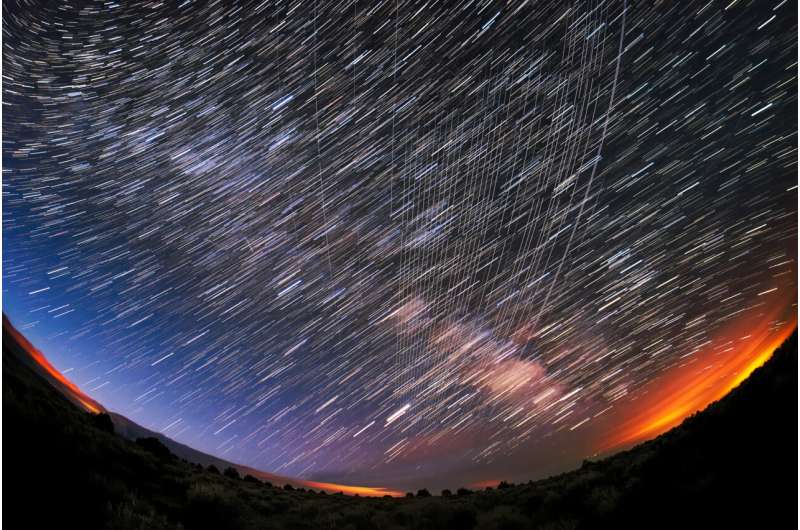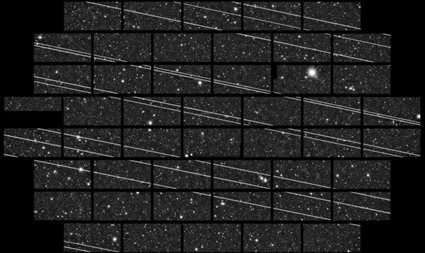Protecting dark and quiet skies from satellite constellation interference

If you've ever tried to star gaze in a residential or urban area, you know that a streetlight or even the lights from a nearby town can greatly interfere with your ability to identify Orion's Belt and see a rare comet or other celestial bodies. But what is more of a disappointment for us is a cosmic disruption for scientists and others in the space industry.
To preserve this vital characteristic of the universe, a new International Astronomical Union Centre for the Protection of the Dark Sky from Satellite Constellation Interference has been established.
Siegfried Eggl, faculty member in the Department of Aerospace Engineering at the University of Illinois Urbana-Champaign and Robert Gruendl in Illinois' Dept. of Astronomy have been selected to participate. They are both members of the Center for AstroPhysical Surveys in the National Center for Supercomputing Applications at UIUC.
"With the advent of more affordable launch options large-scale commercial use of space has become a reality," Eggl said. "As with so many ambitious projects, the increased presence of tens of thousands of artificial satellites in low-Earth orbit comes with challenges. For example, sunlight reflected off solar sails causes satellites to be bright enough to be visible with the naked eye. At times those satellites are brighter than most stars on the sky. Because they are also fast moving, they pose a significant challenge to ground-based astronomy, but they may also affect wildlife relying on a starry sky to navigate."
Eggl said the purpose of the new center is to bring all stakeholders together and find practical solutions to minimize potentially adverse effects of so-called "mega-constellations."
"UIUC is one of the main contributors to the new center," Eggl said."This speaks to the trust the international community puts in us to create links between aerospace industry, astronomers, regulators, and other stake holders."
According to Eggl, the center is primarily focused on being a forum of exchange betweenstakeholders - a safe place where concerns are heard and practical solutions worked out in a collaborative spirit.

"Naturally, there will be reports and recommendations to agencies all over the world, but the policing has to be done by regulators."
Eggl's role is to coordinate UIUC's efforts for the center and develop software that can help to better understand the effect of satellite mega-constellations on large astronomical surveys such as the upcoming Legacy Survey of Space and Time conducted at the Vera C. Rubin Observatory.
"In particular, I will study how constellations affect our ability to spot potentially hazardous asteroids and work with aerospace industry to mitigate any potentially negative effects to the largest possible extent," Eggl said.
Gruendl serves as the production scientist for the Dark Energy Survey at NCSA.
"This astronomical survey ended just as the satellite constellations began to grow in earnest," Gruendl said. "The camera used for that survey, DECam, continues to operate at the Cerro Tolo
lo Inter-American Observatory in Chile. We can use the infrastructure developed for the Dark Energy Survey to monitor the impact as the satellite constellations grow and to test strategies for mitigating their impact."
The center was officially announced on Feb. 3, 2022 by the leading entities: the International Astronomical Union, the National Science Foundation's National Optical-Infrared Astronomy Research Laboratory, and the SKAO Observatory.
Provided by University of Illinois Grainger College of Engineering





















